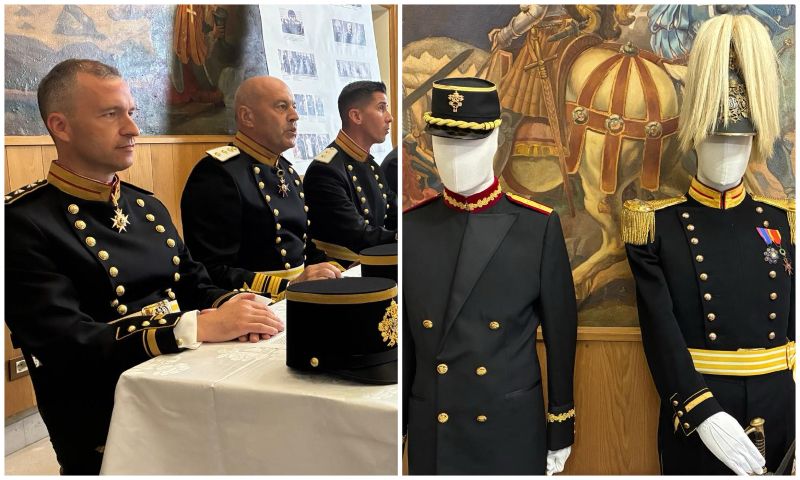The Swiss Guard (the Vatican’s military unit) has long been known for its strikingly colorful attire worn while protecting the Pope and Vatican City. But now, there is also a new, neutral uniform for officers when they perform duties outside the city. And like many uniforms worn in this religious enclave, it came into existence in a unique way.
An in-house tailor within the Vatican
The men of the Swiss Guard have worn their ceremonial uniform since 1915, featuring the colors yellow, blue, and red. Yet few people know that until 1976, they also had a special suit for occasions outside the Vatican, such as diplomatic receptions or official dinners. On such occasions, they wore a black wool suit. Although this uniform was abandoned nearly 50 years ago to shift more focus toward the colorful attire, the decision has now been reversed. The black suit offers clear advantages: it is much warmer than the ceremonial uniform, and its neutral color is better suited for formal occasions.
The new black uniform is a replica of the old model that was worn until 1976. (source) Although it has not been officially disclosed who designed or developed it, it is believed to have been made within the Vatican itself. The Swiss Guard has its own tailor’s workshop (sartoria) located inside their barracks in Vatican City. This workspace is situated in the Casermetta, the building where the Guards live, eat, and train. Here, professional tailors (often Italians or Swiss) work alongside Guards who wish to gain experience in the tailoring trade.
This team designs, adjusts, and repairs the uniforms. No small task, considering that the colorful ceremonial version consists of 154 individual pieces. A complete uniform requires an average of 1,000 to 1,500 hours of handwork and weighs around eight kilograms. The new uniform costs €2,000 ($2,300) and was paid for by an anonymous donor.
Separate ateliers for the clergy
The clergy, cardinals, and the Pope himself do not have an in-house workshop. Their garments are made by various tailors located in and around Vatican City. Several of these ateliers have been serving the clergy for decades and have built strong reputations within the Vatican. One such tailor is Raniero Mancinelli, who has crafted garments for Popes John Paul II, Benedict XVI, and Francis. He is also frequently commissioned to create ecclesiastical garments for special occasions.
Because this work, like the Swiss Guard’s uniforms, requires a great deal of time, tailors often prepare well in advance. Mancinelli revealed in April 2025 that he had already begun crafting the white cassocks intended for the next Pope. Even though he did not yet know whether he would receive the commission or who the new Pope would be. He prepared three versions: small, medium, and large. Regardless of who would be chosen, there was always some risk involved, he said, since every Pope has his own preferences. Pope Francis, for example, preferred a modest style, not too expensive and made from simple fabric . While Pope Benedict favored heavier, more luxurious materials.
Whether Mancinelli’s prepared garments were ultimately worn by the new Pope has not been made public. There are several competitors within the Vatican who also prepare clothing in advance, but who does what is not always disclosed. After all, the Vatican is hardly a place to boast about one’s clients or accomplishments.
In a world where uniforms are increasingly standardized, the Vatican remains a rare example of craftsmanship devoted to tradition.




















